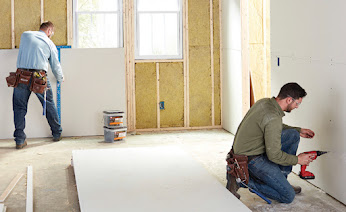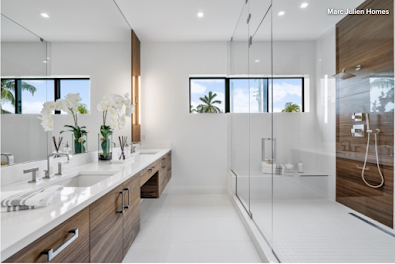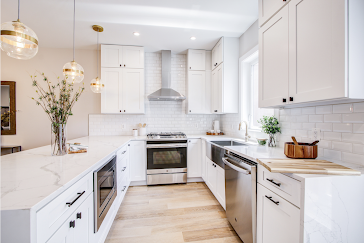Drywall or Cement Board, What Type Should I Use, And When Should I Use It?
Drywall has been referred to as many names (Gypsum Board, Sheetrock®️, Plasterboard, and Wallboard. Some of the advantages of using drywall include: low cost materials, and ease of installation and finishing. Drywall can also bring some additional features such as sound control, and fire resistance. Along with advantages come disadvantages, and some of these are: the ability to work with a curved area, and low durability from cuts or impact. Drywall is made up of gypsum (Calcium Sulfate Dihydrate), paper. And other elements such as mica, clay and resin. You can getDrywall in different thicknesses, 1/4” being the thinnest, the most common size is 1/2”. In some cases you can even use 5/8” for fire resistant applications. Drywall can come in many variations, but some of the most common are: Regular drywall, mold-resistant Drywall, Fire resistant Drywall, Soundproofing Drywall, VOC Absorbing Drywall, and Plasterboard. Although drywall installation and finishing has its challenges, overall installation is fairly easy. I would suggest checking your local code for the proper screw spacing. My suggestion also is to place the boards horizontally across the studs to increase the wall strength, instead of running them vertically along with the studs, try to make your cuts as straight as possible, and placing you screw a maximum of 1/2” from the edge of the board will guarantee coverage with the tape. As a beginner it is not recommended that you use the faster drying compound, because you will just be learning you floating technique. Below are a couple of videos to cover the basics. Next let’s talk about cement boards.
Drywall Basics | Drywall Installation Guide
Installing Drywall On Your Ceiling | Drywall Installation Guide Part 2
Now we get into cement boards, cement boards are composite materials made of sand, cellulose fiber and cement. There are many applications for cement board, some of which are: on floors for tile installation, in shower/tubs wall surrounds for tile installation, and on kitchen countertops for tile installation. To answer a mythical question regarding cement board, it is not a water repellant; it is water resistant. Cement board is a better product when it comes to installing walls in high-moister areas. Another advantage cement board has over drywall is that, it can handle impact better. Some of the more popular cement board brands are Durock®, HardieBacker®, and PermaBase®. You should alway check the manufactures specifications when installing cement board products, sometimes this may require special screws to be installed. Cement board also will require different cutting tools, as opposed to drywall. After installing your boards, you should tape all joints with a fiber tape and cover with quick dry cement. I recommend after installing your cement board, you cover it with a water proof membrane. I have a quick video of some cement board installation tips. I hope you enjoyed reading this blog.



I appreciate how you outlined the variations between plasterboard and cement board. Both novice and experienced DIYers can benefit from your thorough description when choosing materials for their projects. When handling home improvement projects, it's useful to have a reference like "The DIY Educator" to refer to. Speaking of aid, anyone who needs home-related jobs might find value in going to My Home Handyman. To make sure your projects are completed successfully and quickly, They provide a variety of services, including plasterboard installation. Keep up the fantastic work of educating and assisting the DIY community through your informative blog!
ReplyDeleteThanks for sharing great post! read also: jennifer lopez net worth
ReplyDelete